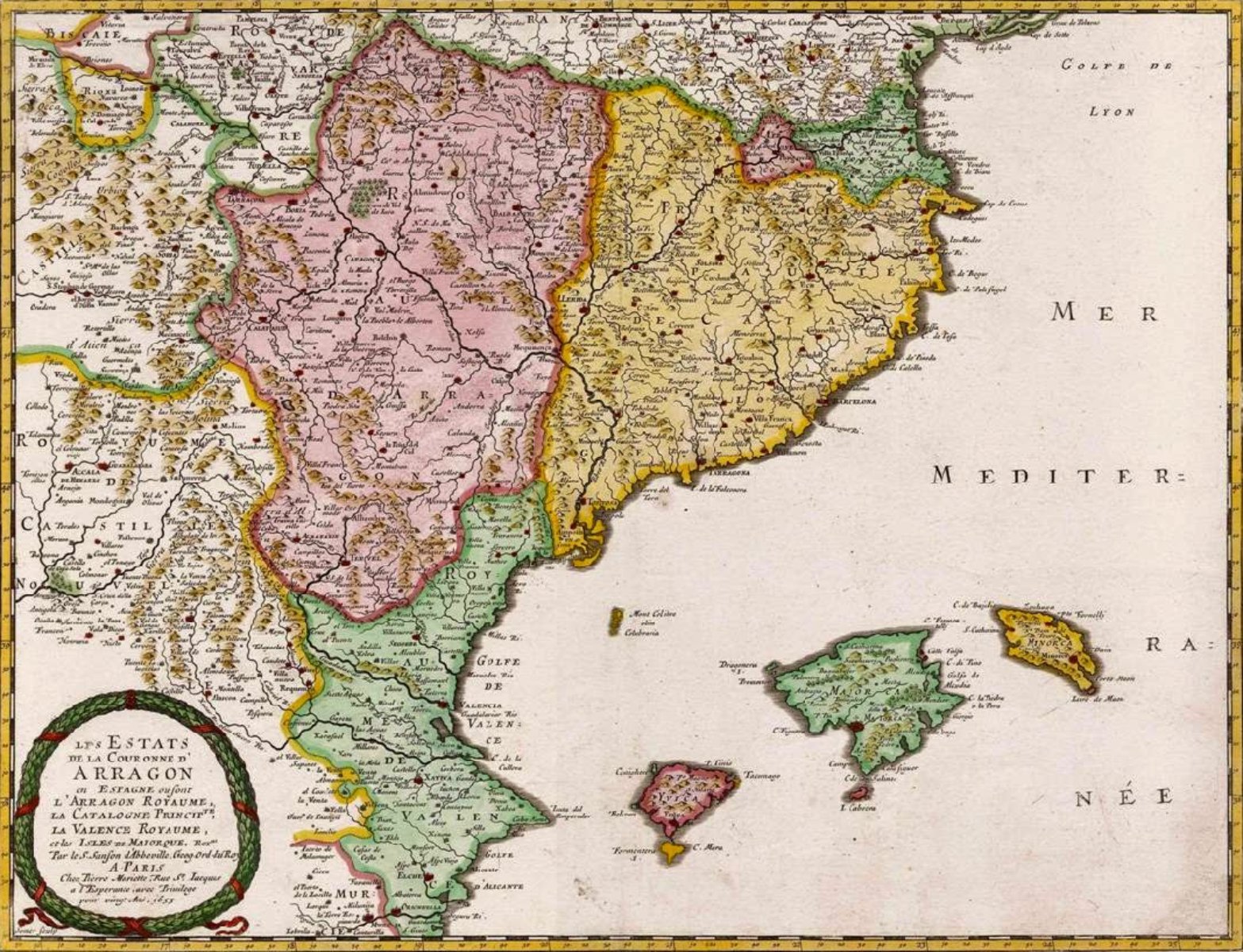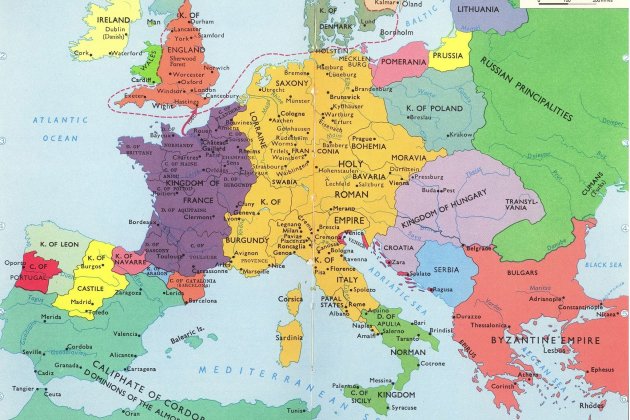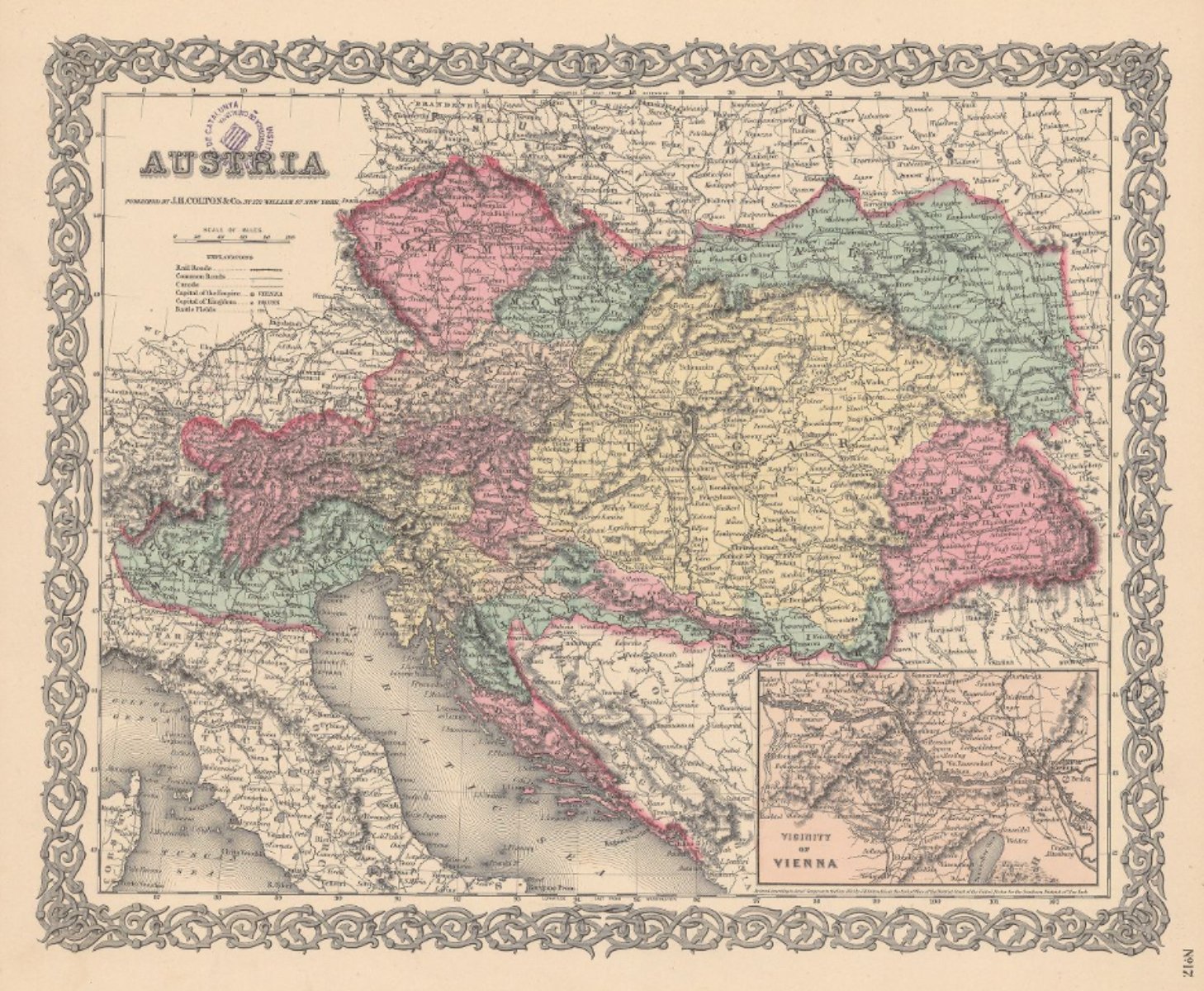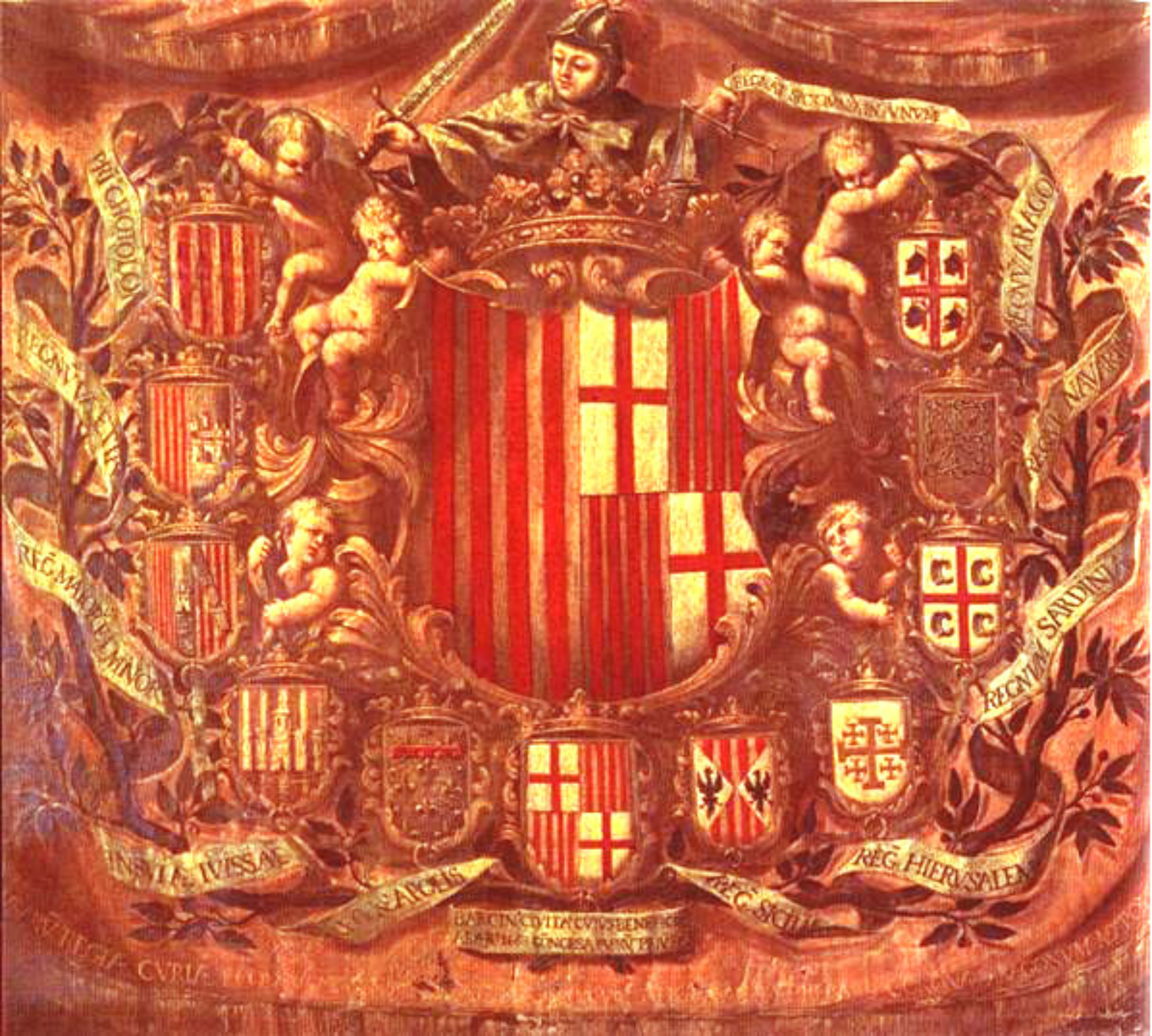It is the only case in European history where the nomenclature of a conglomerate is ascribed to one of its secondary domains.
The Catalan town of Lleida, one day in August 1150. Ramon Berenguer IV, independent count of Barcelona, 12th count of the Catalan Bel·lònida line; and Peronella, only daughter of king Ramir II of Aragon and last princess of the Aragonese Ximena line, were married in the cathedral of Santa Maria l'Antiga. That political marriage enshrined the dynastic union (never the territorial fusion) of the two main domains of the north-eastern quadrant of the Iberian peninsula. For two long centuries, that conglomerate political unit added other states over time (Mallorca, Valencia, Sicily, Malta, Sardinia); it was called simply, Corona - that is, "Crown" - from the 12th to 14th centuries. The added words "of Aragón" would not become generalized until the new Trastàmara line of Barcelona began the long process of dynastic union with the Castilian-Leonese Crown (15th century).
Barcelona, dominant in the negotiation
Spanish historiography has always made great efforts to try and justify the addition of the "of Aragón" by asserting a hierarchical difference between the respective sovereigns of the Catalan-Aragonese union. And the message has been repeated and disseminated, like a perverse mantra, "that a king is greater than a count". Some historians have even sketched that dynastic union into a patriarchal and misogynistic picture. For example, the not-at-all impartial manipulation - customised for the occasion - that the Aragonese historian Ubieto makes of a respectable ancient institution of marital inheritance known as matrimonio en casa. Ubieto portrays Barcelona as a battered, louse-infested and destitute maiden, who survived by passed from the arms of the father (the kingdom of France) to the arms of the husband (the kingdom of Aragon). But the facts show that from the first negotiations (in Barbastre, 1136, and Ayerbe, 1137), Barcelona was always the dominant element.

The drill of the feudal regime
So why this obsession with transforming reality? We know that from the Feudal Revolution onwards, that is, after about the year 1000, the balance of the hierarchical pyramid was substantially altered; and many marquises, dukes and counts who had developed the resources and assets of their positions became independent of central power, and thus in many cases, they developed into rulers more powerful than some kings; those who had in the break-up process kept their title, but had lost its power. Would anyone, with a minimal knowledge of history, dare to argue that, after the triumph of the feudal regime (10th and 11th centuries), the kings of Croatia were more powerful than the dukes of Venice? Or that the kings of Wessex, in the south of England, were more powerful than the counts of Flanders? Or the kings of Scotland more powerful than the dukes of Burgundy?
Hispania is different
But there was also another factor affecting the situation on the periphery of Europe. In the Iberian Peninsula, except in the Catalan counties, the feudal regime did not take root strongly. And the manorial regime that had preceded it (which was based on the traditional hierarchical pyramid) was preserved. The Arista line of Basque leaders limited themselves to making effective their position of dominance within the community, and they titled themselves kings (810) without imperial or pontifical authorization (the only two powers that could crown a king). And not only that. The Navarrese monarchy was a factory of kings: in fact, it transformed the domains of the counts of Castile and Aragon into kingdoms. But this category, in the context it had, did not place those rulers in a sphere that was higher than anyone else. With such manoeuvres, the intention was simply to consecrate the dominance of a character or a family group.

Pelagius and the Aristas
Pelagius, the mythical Don Pelayo of the Spanish reconquista, was in reality not the mythical courtly magnate from Toledo, a relative of king Roderic, the last Visigothic monarch. The prestigious historians Marcelo Vigil and Abilio Barbero, who are not suspected by anyone of favouring historical revisionism, have showed that Pelayo was nothing more than a local Asturian leader who had the ability to fabricate the idea of the Hispano-Visigothic restoration. And without entrusting himself to either God or the devil, he named himself king of Asturias and successor to the Visigothic Toledan monarchy (718). But he never obtained recognition by the authorities of the other resistant focuses in the north of the peninsula. And this would explain the appearance on the scene, some time later, of the Aristas of Pamplona (824) and, above all, the fact that those first Aragonese kings of Navarrese origin (1076-1137) were nothing more than the result of the total fragmentation of the Pelayo project.
Habsburgs and Savoys, Austria and Piedmont
During the Middle and Modern Ages (12th to 19th centuries), construction processes similar to those of the Catalan or Catalan-Aragonese Crown took place throughout Europe. For example, the independent archduchy of Austria. Between the 16th and 18th centuries, the Viennese Habsburgs created a conglomerate of domains from the archducal nucleus of Austria and the progressive absorption of the kingdoms of Bohemia, Croatia, Hungary and Slavonia. These kingdoms always had a subordinate role with respect to the Austrian core (the archduchy), and this is how the nomenclature of history would reflect it. Another case was the independent Duchy of Piedmont. The Savoys from Turin obtained the dominion of the kingdom of Sicily (1713), which they exchanged for the kingdom of Sardinia (1718) in exchange for abandoning the Austrian cause in the War of the Spanish Succession.

The independent Archduchy of Austria
In neither of these two cases was the leading role of the more assertive territorial unit in its respective conglomerate hidden behind any of the secondary domains, no matter what category - allegedly superior - the lesser domains held. In 1538 the independent archduke Ferdinand I received the kingdom of Hungary from the Hungarian monarch Louis II. Just as in 1137 the independent count Ramon Berenguer IV of Barcelona had received the kingdom of Aragon from the Aragonese monarch Ramir II. Nobody thought of calling that conglomerate "Crown of Hungary", by virtue of a supposed pecking order that said "a king is greater than an archduke". Just as no one would think of referring to archduchess Maria Theresa of Austria (the sovereign of the Austrian Golden Age), as the "Slavic queen"; or to archduke Franz Ferdinand (the one who was murdered in Sarajevo), as the "Bohemian monarch".
The independent duchy of Piedmont
No one, with the slightest knowledge of history, would think of saying that Cavour, Mazzini or Garibaldi were the leaders of the political movement and Sardinian army that unified Italy (1869). So, why do Catalans tolerate that, without even looking embarrassed, people talk of "the Aragonese king Jaime I", "the Aragonese conquest of Mallorca", "the Aragonese almogávares of Sicily" or "the Aragonese merchants of Naples"? When we know perfectly well that Jaume I proclaimed that "Catalonia was the best kingdom of the Spains"; and that the Aragonese had no participation in the move into Mallorca; or that the almogàvers, light infantry units, were, basically, of Catalan nationality; and that Mediterranean trade - the nerve of the political and military power of the house of Barcelona - was the exclusive work of the Catalan mercantile arm. Crown of Aragon? No, Catalan Crown.
Part Two of Marc Pons's historical argument on the nomenclature of the conglomerate usually known as "Crown of Aragon" can be found here

